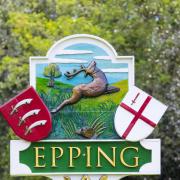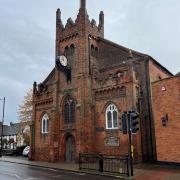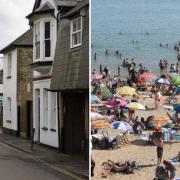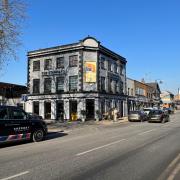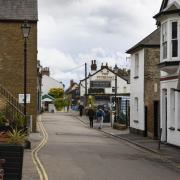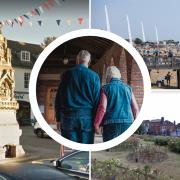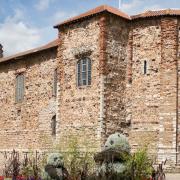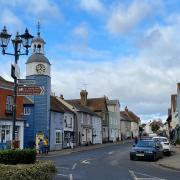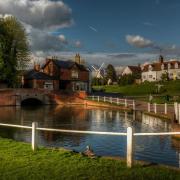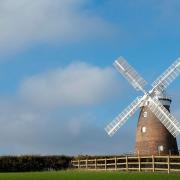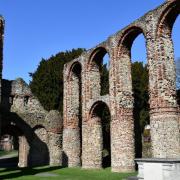In 1964 ‘something fierce’ emerged in Essex — a new university determined to look to the future and break with tradition. Essex Life looks back at 50 years of student life

In the archives of the University of Essex is a special commemorative supplement dating back to 1964 showing the donations made towards its establishment.
They came from all corners of the county. The closely packed names detailed in inky black print feature virtually every business of any significant size in Essex at the time, alongside the great and the good. Further pages filled with newsprint are a testament to the huge sense of enthusiasm, excitement and pride following the decision to establish a university in Essex.
At the time, Lord Alport, Colchester MP from 1950 to 1961, declared the establishment of the university in the town as ‘the most important thing since the Emperor Claudius built his temple’. Meanwhile, the tireless work of leading Essex figures such as then county council chairman Lord Leatherland and Lord Lieutenant Sir John Ruggles-Brise initiated and then drove the project through.
As the university reaches its 50th anniversary this month, a special exhibition at its Colchester Campus is investigating that unique moment and the institution it created — now recognised as one of the leading universities in the world and the best for social sciences in the UK.
The new university was determined to look to the future and break with tradition and the new exhibition titled Something Fierce celebrates the bold, ‘brutalist’ Sixties architecture of the Colchester Campus; the unique academic vision of the university’s founders and the vibrant community of scholars and students they created.
It also offers a unique insight into student life at Essex — the very first students, the protests from 1968 onwards and the emergence of the university’s incredibly diverse international student community.
Professor Lubbock, Emeritus Professor of Art History, is curating the exhibition with Jess Kenny, Arts and Gallery Director. He says: ‘Greatly admired by some, including our current Vice Chancellor Professor Anthony Forster, who initiated this project, our 1960s architecture remains controversial. By explaining its rationale we hope to raise people’s awareness of the university’s heritage and encourage people to be proud of it.’
The Hexagon — one of the iconic buildings built at the birth of the university — hosts the displays and has been especially refurbished in time for the start of the 50th anniversary celebrations. Legendary designer David Hillman, who created the graphic identity of The Guardian newspaper, oversees the exhibition’s design.
Designs, artist’s impressions and scale models of the original plans will be on show with films, audio and photos spanning the decades plus the memories from staff and students. Visitors will be able to peak into a reconstruction of a student room from the past and journey into a new virtual model of today’s Colchester Campus.
Many now view the university’s buildings as vital examples of UK architecture of the 1960s with the Albert Sloman Library selected as an ‘icon of British design’ by the Victoria and Albert Museum in 2012. The innovative design of the campus also led to the Hexagon itself being included on a Royal Mail stamp in the early 1970s.
The designs created by the original architect and master planner Kenneth Capon of Architects Co-Partnership were aimed at creating a close-knit community which reflected Sloman’s thoughts.
Professor Lubbock says: ‘Capon produced a master plan in which all functions were ingeniously dovetailed together in an extremely compact area, so that nothing would be further than five minutes’ walk from the centre. Consisting of five pedestrian squares, these ascended the valley which ran down to the River Colne, so as to preserve the 18th century landscaped parkland which Constable had painted.’
The idea was to bring people together, break through subject barriers and encourage people from different disciplines to exchange ideas.
The exhibition title, Something Fierce, comes from the words of original architect Kenneth Capon who said he wanted to avoid the trap of ‘softening everything up’ in a typically English way and ‘do something fierce to let them work within’.
Professor Lubbock points out: ‘The buildings were forcefully designed both to place the University of Essex on the local skyline through the towers and to express the towering academic ambitions of the founders.’
Five decades later and Essex has developed a reputation for its fiercely independent mindset. Fortunately, alongside that intellectual fierceness the university has fostered a supportive community with a truly international outlook featuring staff and students drawn from more than 130 countries. More than 75,000 students have now graduated from the university with more than 10,000 of them settling in Essex after their studies and the co-curators hope many will return to see the exhibition and share their memories through the exhibition and on the newly-created Memory Map website.
The second floor of the exhibition will celebrate this sense of community and membership. Co-curator Jess says: ‘The exhibition brings together some of the amazing photos, films, memories and mementoes our graduates and staff have kept. We’ve got posters and fliers from the demonstrations of the 1960s and 70s. We’ve trawled through the Albert Sloman Library and East Anglian Film Archive to find insights into 50 years of student life at Essex.
‘Blown-up photos, archive film footage, music from bands that played at Essex, student bedroom sets and giant pin boards for people to share their memories will all make for a lively exhibition which will reveal the many extraordinary stories about what people got up to while they were here.’
Find out more
The exhibition will be open from Friday, September 12 to Sunday, December 14 at The Hexagon on the Colchester Campus. Opening times are 9am to 5pm. For more information, go to www.essex.ac.uk/fifty/exhibition
The university’s Memory Map project will develop a unique online archive of memories, photos and video. Find out more about sharing memories at www.essex.ac.uk/fifty/memories
From Friday, September 12 to Sunday, September 14, the Colchester Campus will be hosting Homecoming and welcoming back Essex graduates to share a special weekend of events and activities with staff, students, friends and the local community. Everyone is welcome to join the celebrations. Find out more at www.essex.ac.uk/fifty/homecoming
1 to 10 of University of Essex
1. The first students arrive – 77 men and 45 women are admitted in 1964 for the university’s first academic year. The following year the university’s Royal Charter is granted.
2. Her Majesty The Queen made her first visit to mark the university’s 21st anniversary and visited
again in 2004 to mark its 40th anniversary. The late South African president Nelson Mandela
came to the Colchester Campus in 1997 to accompany Graca Machel as she collected her honorary doctorate.
3. Alumnus Óscar Arias received the Nobel Peace Prize in 1987 for his efforts to end civil wars in South America and fellow alumnus Professor Sir Chris Pissarides received the Nobel Prize in economics in 2010.
4. The university received the Queen’s Anniversary Prize for its work in promoting and protecting human rights in 2010. To mark her Diamond Jubilee the Queen bestowed a Regius Professorship on Essex in recognition of 50 years of excellence in research and education in politics.
5. Wivenhoe Park, the home of the Colchester Campus, was immortalised on canvas by John Constable in 1816. The original mansion is now home to Wivenhoe House, a luxurious country house hotel and a base for the Edge Hotel School – the first of its kind in the country.
6. In 2000 the university joined forces with East 15 Acting School which continues to enjoy a worldwide reputation after celebrating its 50th anniversary in 2011. The university validates degrees at partner institutions Writtle College, South Essex College, the Tavistock and Portman NHS Foundation Trust and Colchester Institute. University of Essex Online has also been established in partnership with Kaplan Open Learning.
7. The university has been consistently ranked in the top 10 in the UK for the quality of its research.
From the beginning it has had an impact from pioneering research into poverty and inequality by Professor Peter Townsend, to the development of the world’s first publicly available computer language by Professor Tony Brooker.
8. The Colchester Campus is famous for its iconic buildings from ‘brutalist’ 1960s treasures such as the Albert Sloman Library and The Hexagon to the award-winning Ivor Crewe Lecture Hall. The university is investing in its future with the new £26m Student Centre and library extension under way and the new £21m building to house Essex Business School due to open later this year.
9. There are now more than 1,000 students at the university’s Southend Campus. In 2007 the Gateway Building opened, followed in 2010 with the Clifftown Theatre and Studios. In 2013 The Forum Southend on Sea was unveiled – a unique award-winning partnership between the University, South Essex College and Southend on Sea Borough Council.
10. Renown as one of the most diverse universities in the world with staff and students drawn from more than 130 countries, the university is ranked 22nd among world universities under the age of 50 by Times Higher Education.




